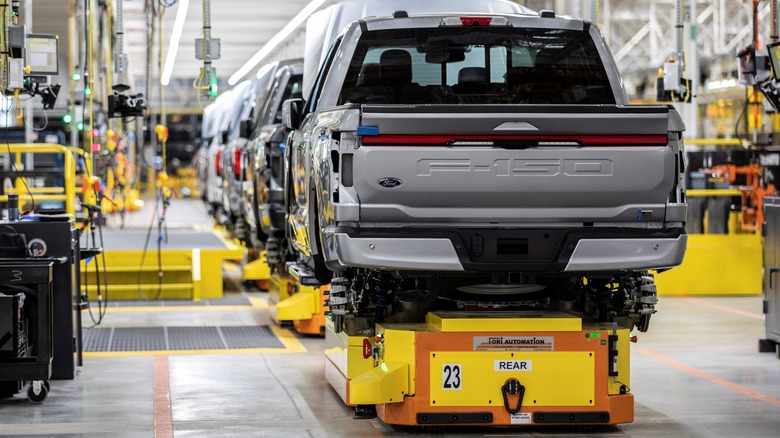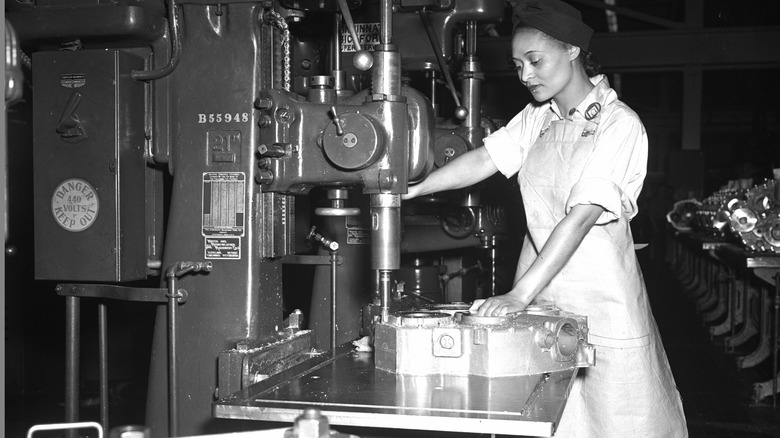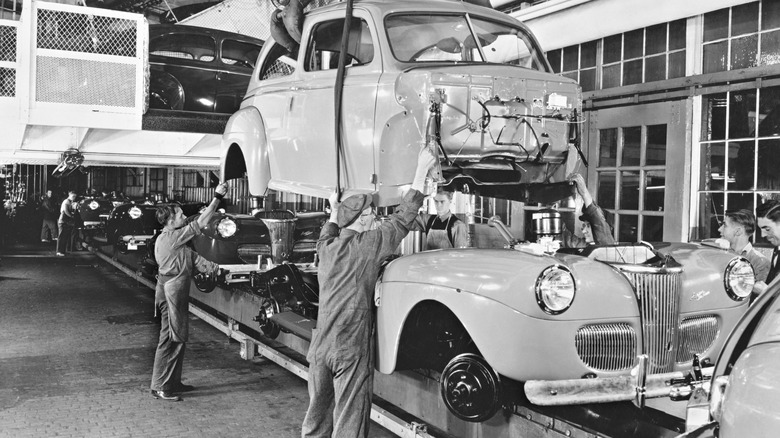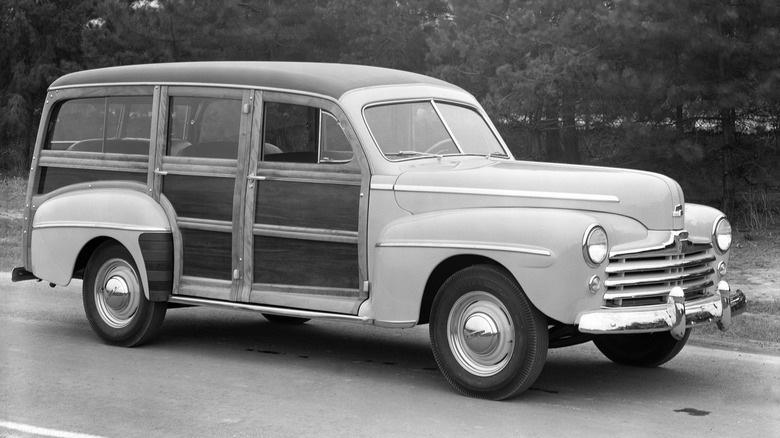
Ford
Ford’s lengthy history in the automotive market is defined by myriad peaks and valleys. Over the years, the car manufacturer has seen triumphant successes like the introduction of the legendary Ford RS200, and catastrophic failures like the disastrous flop of the Ford Edsel.
There have been eras when Ford has stood tall as one of the dominant forces of the auto industry, and others when the company has teetered dangerously close to the brink of bankruptcy. Nonetheless, the brand has consistently maintained its presence in the consumer car space all throughout its life — that is, except for one odd period.
As surprising as it may sound, there is one point in the history of Ford in which the manufacturer didn’t produce any new civilian cars. For this multi-year period, the company had to involuntarily cease production on its usual models and reallocate its efforts to another consumer base entirely. Here’s all the info to know on when exactly Ford took its hiatus from the civilian automobile industry, how long the pause lasted for, and what brought about this strange blip in the first place.
Wartime threw a wrench in Ford’s plans

Ford
As many an American historian might tell you, just because World War II was primarily fought abroad, that doesn’t mean that life in the United States was unaffected on a domestic scale. Indeed, the second World War initiated a total societal upheaval for those at home in America.
Numerous industries and businesses, such as those based in food and entertainment, focused their full efforts on producing goods to aid the Allied war effort. Henry Ford publicly took a staunch stance against American involvement during the war, but it was only a matter of time before Ford as a company also found its operations radically altered by wartime.
In January of 1942, roughly one month after the Japanese attack on Pearl Harbor, the United States federal government ordered Ford to cease all sales of its civilian cars indefinitely. The company was subsequently ordered to stop production on its regular slate of products by February.
The ensuing months would see Ford almost completely reallocate its resources to the production of military vehicles and weapons, including Allied WWII tanks, airplanes, and gun ammunition. It was a major shift for the company, which had previously maintained an official stance of manufacturing neutrality and, notably, a partnership with Nazi Germany for the production of wartime materials.
Of course, Ford was not the only car company that faced these federal mandates during World War II. The government’s orders to stop sales and production of civilian cars were industry-wide, and other companies like General Motors underwent similar transformations into major sources of production for the Allied war effort. The result was a complete and utter stoppage of the production of civilian cars — a major shift in the market that would last for multiple years.
The drought of civilian cars was tough on consumers

Ford
In order to grasp just how massive of an industry shift Ford’s hiatus from the production of civilian cars during World War II was, it’s important to understand just how intense the federal regulations were. Not only was Ford barred from producing or selling civilian vehicles during this time, but the vast majority of its unsold stock of cars was claimed by the government as a wartime stockpile — reserved only for important societal figures and workers like politicians and police officers. For the average consumer during World War II, there was essentially no way to buy a new Ford car — or any automobile, for that matter.
The complete halting of sales and production of civilian cars turned Fords and other vehicles into a major commodity. Resources like car tires and gasoline also became rarities as their centers of production were similarly reoriented toward aiding the war effort. For years, consumers had to ration the usage of their current car in the hopes that it, and all of its requisite equipment, would last through the war. Those who didn’t have a car prior to 1942 were pretty much completely out of luck, save for those with the ability to obtain a special permit.
Suffice to say, this massive pause for the automotive market bred a great deal of demand. Many civilians eagerly awaited the point at which cars would become available for purchase again. As World War II entered its final stages during the mid-1940s, Ford partially turned its attention toward the matter of capitalizing on this demand when the time came.
Ford resumed civilian car production after the war

Ford
While World War II proved to be a dire time for the American automobile market, there was ultimately a light at the end of the tunnel. In late 1944, as the final stages of the war began to come into focus, the United States government anticipated the resuming of normal operations for domestic industries. As a result, the government granted Ford and several other domestic manufacturers special clearance to begin research and preparation for new post-war civilian cars.
In truth, Ford didn’t need to innovate much with its new line of civilian cars. Demand had skyrocketed during the war, to the extent that the general public simply craved the ability to purchase a car at all. Thus, in 1945, as the Axis powers prepared to declare defeat and Ford resumed production of consumer automobiles, the company didn’t reinvent the wheel. For the first couple years following the end of the war, Ford simply stuck close to the designs, features, and models of its 1942-era cars, and coasted on the massive demand.
Of course, as society began to settle during peacetime, Ford eventually resumed its dedication to experimenting with new automobile ideas to edge out the competition. 1947 marked the debut of the first generation of Ford’s F-Series, which proved quite popular and birthed a staple line of the company that is still active to this day. Then, 1949 would see the Ford Mercury rise to stardom with an evocative new design for the Mercury Eight.
Despite its absence from the consumer market during the war, it wasn’t long before Ford had fully reclaimed its spot as a prime manufacturer for civilian cars.